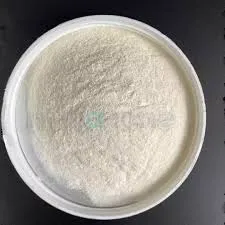
10月 . 04, 2024 22:48 Back to list
Applications and Benefits of Hydroxypropyl Methylcellulose in Various Industries
The Uses of Hydroxypropyl Methylcellulose
Hydroxypropyl methylcellulose (HPMC) is a versatile and widely used cellulose derivative that has gained importance across various industries, including pharmaceuticals, food, cosmetics, and construction. Its unique properties, such as biocompatibility, water solubility, and film-forming ability, make it an essential ingredient in many applications.
Pharmaceutical Applications
In the pharmaceutical industry, HPMC serves multiple functions. It is primarily used as a binder, stabilizer, and thickening agent in the formulation of tablets and capsules. HPMC enhances the mechanical strength of tablets and improves the release profile of active pharmaceutical ingredients (APIs). Its ability to swell in water allows for controlled drug release, making it ideal for sustained and extended-release formulations. Additionally, HPMC is often employed in ophthalmic preparations due to its excellent lubricating properties, providing relief from dryness and irritation in the eyes.
Food Industry
In the food sector, hydroxypropyl methylcellulose acts as a food additive that enhances texture, viscosity, and stability. Commonly found in processed foods, HPMC is utilized as a thickener, emulsifier, and stabilizer. It helps to improve the mouthfeel of products such as sauces, dressings, and dairy items. Its gelling properties are also advantageous in vegetarian and vegan food applications, serving as a substitute for gelatin in desserts and other congealed products. Furthermore, HPMC is recognized for its ability to retain moisture in baked goods, extending shelf life and improving freshness.
hydroxypropyl methylcellulose use

Cosmetic and Personal Care Products
The cosmetic industry benefits significantly from the use of HPMC, where it plays a crucial role as a film-forming agent and thickener. It is used in a variety of products, including lotions, creams, and shampoos, where it helps to stabilize emulsions and provide a smooth texture. HPMC provides a non-greasy feel on the skin, making it a popular choice in skincare formulations. Additionally, it is utilized in the production of gels and pastes and is often found in formulations designed for sensitive skin due to its mild nature and compatibility with various ingredients.
Construction Industry
In construction, hydroxypropyl methylcellulose is used as a crucial component in dry-mix mortars, such as tile adhesives and joint compounds. It enhances the workability, adhesion, and water retention of the mortar, ensuring better performance during application and setting. HPMC enables longer open time, allowing workers to adjust tile placements without compromising on adhesion. It also improves the ease of application, making it a preferred choice for professionals in the industry.
Conclusion
In summary, hydroxypropyl methylcellulose is an invaluable ingredient across several sectors due to its multifunctional properties. Its applications range from pharmaceuticals and food production to cosmetics and construction, showcasing its versatility and efficiency. As research continues to uncover new uses for HPMC, its role in various industries is expected to expand, enhancing product performance and consumer satisfaction. Whether improving drug delivery, enhancing food quality, or ensuring product stability and texture, HPMC remains a fundamental component for innovation and success in many fields.
-
What is HPMC?
NewsJun.06,2025
-
Understanding Redispersible Powder: The Future of Construction Materials
NewsJun.06,2025
-
Understanding RDP Powder: The Ultimate Solution for Your Construction Needs
NewsJun.06,2025
-
Pure HPMC: The Ideal Solution for Modern Construction and Building Materials
NewsJun.06,2025
-
Methyl Hydroxyethyl Cellulose: A Versatile Chemical Compound
NewsJun.06,2025
-
Hydroxyethyl Cellulose Power: The Essential Chemical for Various Industries
NewsJun.06,2025







